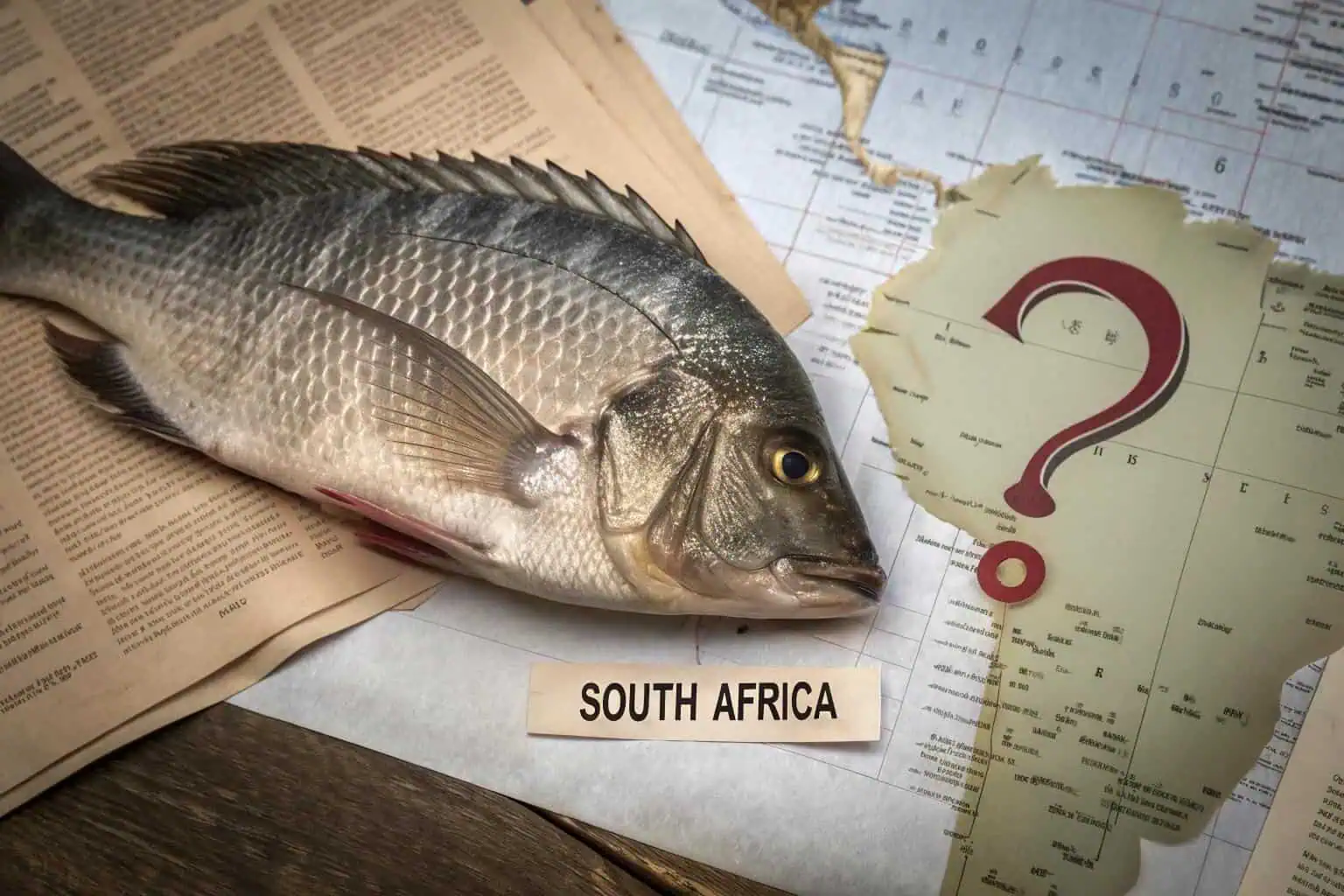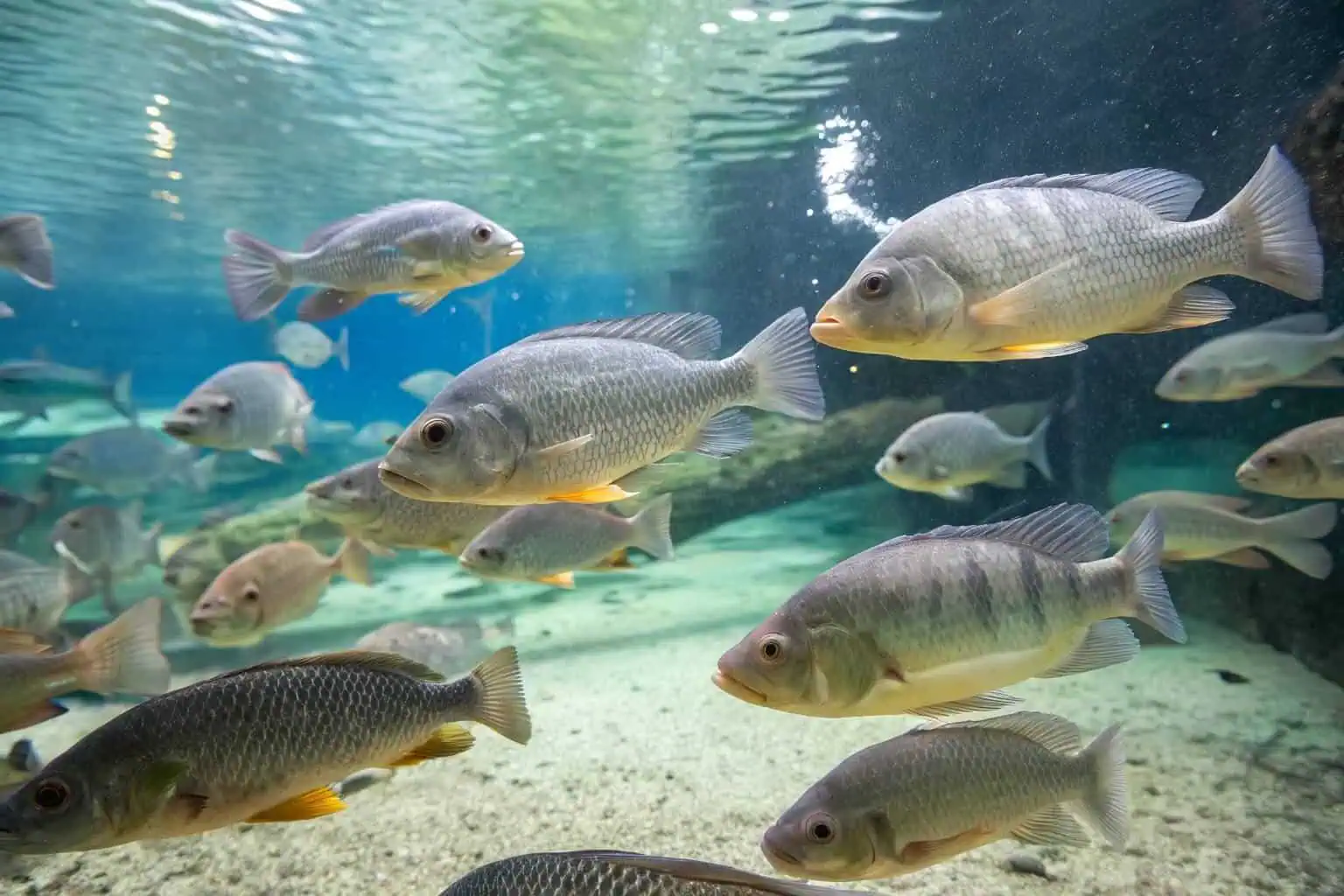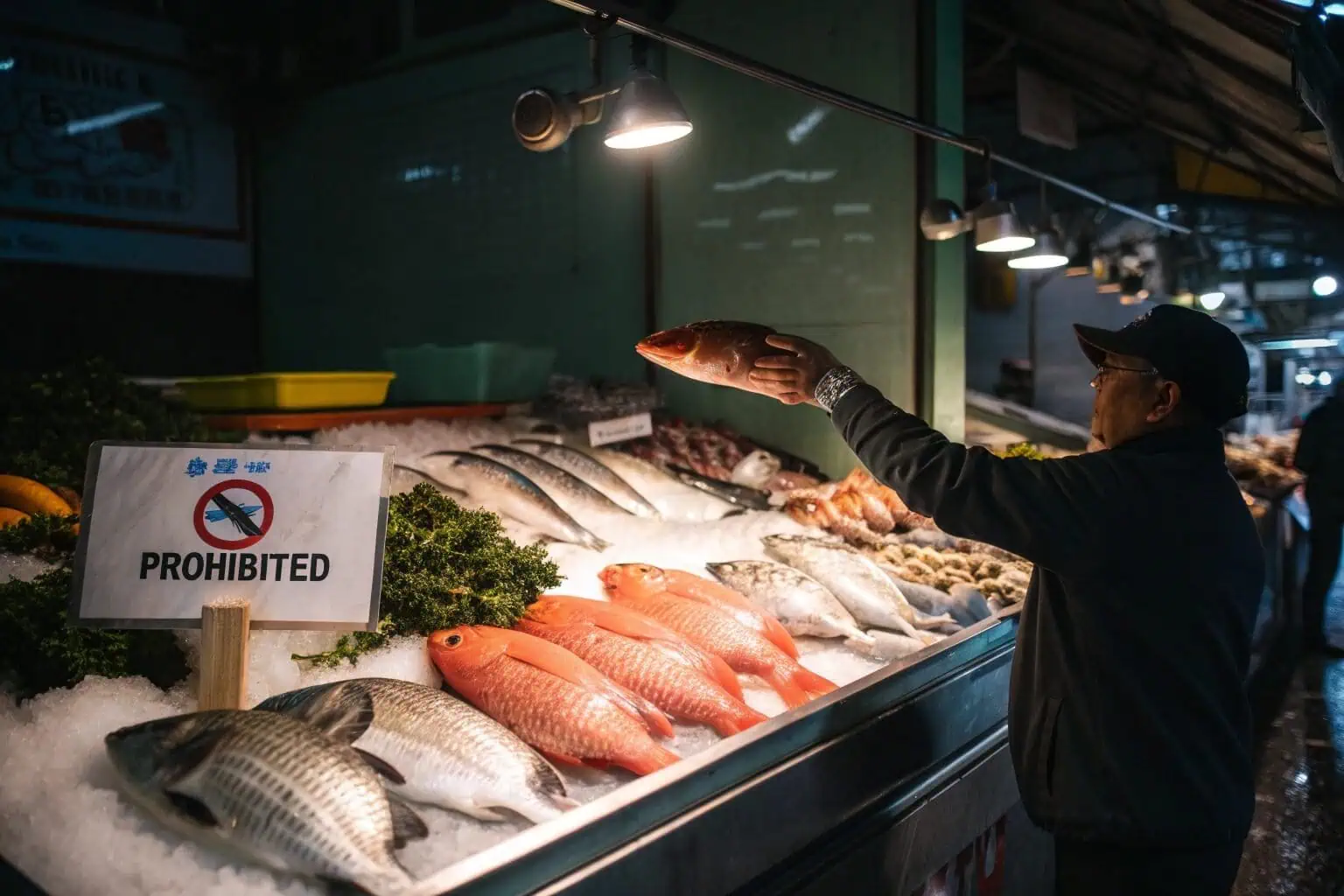Is tilapia legal in South Africa?
Feeling unsure about tilapia laws in South Africa? You're not alone. Many find the rules confusing, impacting everything from farming to dinner plates.
Yes, tilapia is legal in South Africa, but with significant restrictions. Specific species like Nile tilapia are banned in certain provinces to protect local ecosystems, while others are permissible under strict guidelines.

Navigating the complex web of fishing and aquaculture regulations in South Africa can be a real headache, especially when it comes to a popular yet controversial fish like tilapia. It's a topic that touches everyone from large-scale commercial fish farmers to the everyday consumer just wondering what's okay to put on their braai. I've spent a good deal of time looking into this, and it's clear that understanding these rules is key for anyone involved in the aquatic world here. Let's dive into what I've found out, hoping to make things a bit clearer for you.
Is there tilapia in South Africa?
Wondering if you can even find tilapia in South African waters or markets? It's a common question, given its global popularity.
Indeed, tilapia is present in South Africa, both in wild populations and aquaculture. However, the types of tilapia and where they can be farmed or found are subject to legal controls to manage their ecological impact.

Exploring the South African aquaculture scene, the prominence of tilapia quickly became apparent. While a major player globally, its presence here is nuanced. The narrative of tilapia in South Africa involves balancing its economic potential with the crucial need to safeguard our unique local fish and water systems. It's understood that while some native tilapia species1 are integrated into the natural ecosystem, the introduction of non-native species such as the Nile tilapia (Oreochromis niloticus)2 has generated concerns. These concerns have resulted in specific regulations. For government contractors involved in water projects or farm owners aiming to diversify, understanding which tilapia species are permissible and which are not is critically important. This goes beyond mere availability; it's about adhering to legal and environmental responsibilities. This directly impacts how dealers procure their fish and the type of professional equipment providers might suggest for farming operations. It's a delicate equilibrium, and the regulations mirror this.
Native vs. Non-Native Tilapia
Here's a breakdown of the different tilapia species found in South Africa and the considerations surrounding them:
| Category | Species Example | Status in South Africa | Reason for Concern (Non-Native) | Regulations |
|---|---|---|---|---|
| Native Species | Mozambique tilapia (Oreochromis mossambicus) | Natural part of ecosystem | N/A | N/A |
| Non-Native Species | Nile tilapia | Viewed with caution | Potential to outcompete native fish3 for food and habitat; Risk of hybridization with native species | Stricter regulations (based on research) |
Regional Differences in Tilapia Presence
The presence and legality of certain tilapia species can also vary by province. For example, as I mentioned from my insights, Nile tilapia farming is prohibited in provinces like Limpopo, Mpumalanga, and KwaZulu-Natal because of the higher risk to sensitive local river systems. In other areas, with different ecological considerations, the rules might be less stringent. This regional variation4 means that anyone involved in tilapia, from farming to selling, needs to be really clued up on the specific rules for their area. It’s a bit of a patchwork, but it’s all aimed at protecting our natural heritage.
Tilapia in Aquaculture
Despite the restrictions, tilapia farming is a significant part of South Africa's aquaculture industry. I've seen how farmers who comply with the regulations can successfully cultivate permitted tilapia species. They often use systems like our Bancy collapsible fish tanks5, which are great for controlled environments. The key is responsible farming practices that prevent escape into the wild and minimize environmental impact. This is where our expertise in providing reliable and customizable aquaculture solutions comes in handy, helping farmers meet both their production goals and their legal obligations.
Which fish is illegal to catch in South Africa?
Worried about accidentally catching something you shouldn't? It's a valid concern for anyone casting a line in South African waters.
Several fish species are illegal to catch in South Africa, primarily to protect endangered or overexploited populations. These often include specific sharks, rockcods, and linefish, with lists updated by authorities.

When I talk to fellow fishing enthusiasts or even commercial operators, the question of what's off-limits always comes up. It's not just about tilapia; South Africa has a comprehensive list of protected marine and freshwater species. The main reason for these prohibitions, as I understand it, is conservation. We have some incredible biodiversity in our waters, and some species have been pushed to the brink by overfishing or habitat destruction. For example, species like the Great White Shark are fully protected, and catching one, even accidentally, can lead to serious trouble. Then there are various rockcod species, like the Red Steenbras, which have size and bag limits, or are sometimes completely prohibited depending on their conservation status. For farm owners who might have natural water bodies on their property, or even dealers who source wild-caught fish, knowing this list is crucial. It’s not just about avoiding fines; it’s about being a responsible steward of our natural resources. The Department of Forestry, Fisheries and the Environment (DFFE)6 is the main body that sets these rules, and they do update them, so staying informed is an ongoing task.
Commonly Protected Species
I've learned that the list of illegal-to-catch fish isn't static. It changes based on scientific assessments of fish stocks7. However, some species are consistently on the protected list due to their vulnerability. These often include:
| Category | Examples | Reason for Protection |
|---|---|---|
| Sharks | Great White Shark, Ragged-tooth Shark | Slow reproduction, overfishing8 |
| Rockcods (Groupers) | Red Steenbras, Seventy-four | Overexploited, slow-growing |
| Linefish | Galjoen (national fish), White Steenbras | Overfished, important recreational species |
| Others | Specific abalone species, some seabreams | Poaching, habitat loss |
This table isn't exhaustive, but it gives an idea of the types of fish that are often protected. It’s always best to check the latest official regulations.
Understanding Bag and Size Limits
Beyond outright bans, many species have strict bag limits (how many you can catch per day) and size limits (minimum or maximum size you can keep). These are also conservation tools9. For instance, a minimum size limit often aims to allow fish to reproduce at least once before they can be legally caught. I always tell people, if you're unsure, it's better to release the fish. The penalties for non-compliance can be hefty, and it’s just not worth the risk to our fish populations.
Impact on Recreational and Commercial Fishing
These regulations affect both recreational anglers and commercial fishing operations. For recreational fishers, it means needing a valid fishing permit10and being aware of the rules for the specific area and species they are targeting. For commercial operations, the compliance burden is even higher, often involving quotas, designated fishing areas, and specific gear restrictions. As a provider of equipment like fish tanks, we at Bancy understand that sustainable practices are becoming increasingly important for our clients, whether they are farming or holding wild-caught fish temporarily.
Is it legal to eat tilapia?
Thinking about adding tilapia to your menu but unsure if it's allowed? This is a key question for consumers and businesses alike.
Yes, it is generally legal to eat tilapia in South Africa. The legality concerns primarily revolve around the farming, selling, and movement of specific tilapia species, not their consumption once legally sourced.

This is a question I get asked surprisingly often, and it highlights a common point of confusion. When we talk about the legality of tilapia, the focus is usually on the upstream activities: which species can be farmed, where they can be farmed, and how they can be sold or transported. Once a tilapia has been legally farmed or caught (if it's a permitted wild species) and sold through legal channels, then yes, it's perfectly legal to eat it. I’ve enjoyed tilapia myself on many occasions! The concern for government contractors or industrial enterprises isn't whether their staff can eat tilapia, but whether the tilapia they might be sourcing for a project or as a food supply is itself from a legal and compliant source. For example, if a catering company supplies a mining camp, they need to ensure their fish supplier adheres to all regulations. The end consumer, sitting down to a meal, generally doesn't bear this burden of proving provenance, but the businesses in the supply chain absolutely do. This is where the importance of dealing with reputable suppliers who understand and follow the rules comes into play. It ensures that the tilapia on your plate is not only tasty but also ethically and legally sourced11.
Source Matters Most
The critical factor for the legality of eating tilapia is its origin. If the tilapia was farmed in compliance with provincial and national regulations, or if it's a native species caught legally, then it's fine to consume. The issue arises if the tilapia comes from an illegal farming operation or was an illegally imported or translocated species12. This is why traceability in the seafood supply chain is becoming increasingly important. As a consumer, asking where your fish comes from is a good practice. As a business, like Bancy, we emphasize the importance of compliant sourcing to our clients in the aquaculture sector.
Tilapia on the Market
You'll find tilapia in many South African supermarkets, fish markets, and restaurants. This widespread availability is a good indicator that, when sourced correctly, it's a perfectly acceptable food fish. The varieties you typically see for sale are those that can be legally farmed13and sold. My experience is that retailers and restaurant chains are generally quite careful about their sourcing due to the potential reputational damage and legal issues associated with selling illegally sourced products. This provides a level of assurance for the average consumer.
Health and Nutritional Value
Here's a look at tilapia, considering its dietary appeal and the legal framework surrounding its presence:
| Aspect | Description | Relevance |
|---|---|---|
| Dietary Benefits | Good source of lean protein14 low in fat, relatively affordable, versatile to cook. | Contributes to tilapia's popularity and global farming. |
| Demand | High demand in South Africa. | Part of the reason for widespread farming. |
| Legal Framework | Aims to ensure demand is met without environmental harm. | Focuses on environmental protection15 not preventing consumption. |
Which category of fish are illegal to buy or sell in South Africa?
Trying to figure out which fish are off-limits for trade? This is vital for anyone in the seafood business, from fishers to retailers.
Fish illegal to buy or sell in South Africa typically include species on the prohibited list for conservation reasons (e.g., certain sharks, critically endangered linefish) and illegally imported or farmed non-native species.

This question gets to the heart of compliance for many businesses I interact with, from small-scale dealers to larger distributors and even government contractors involved in food procurement. The categories of fish that are illegal to buy or sell largely mirror those that are illegal to catch, but with an added layer concerning trade and origin. If a fish species is on the DFFE's prohibited list due to its conservation status – think of species like the Seventy-four seabream or certain abalone species in some contexts – then trading in them is a serious offense. Beyond that, a major category involves non-native species16 that have been illegally imported or farmed. For example, selling Nile tilapia in a province where its farming is banned, or selling any fish that was poached or caught outside of legal quotas, would be illegal. For a business like ours, Bancy, which supplies equipment like fish tanks, we always stress to our clients the importance of only farming and trading in species that are fully compliant with all national and provincial regulations. This protects their business, the environment, and the integrity of the entire aquaculture and fishing industry. It’s about ensuring a level playing field where legal, sustainable practices are the norm.
Species on Conservation Prohibited Lists
Any fish species that is officially listed as prohibited for catching due to conservation concerns is automatically illegal to buy or sell. This is a direct measure to remove any economic incentive for poaching17 or illegally harvesting these vulnerable species. I've seen how authorities are quite strict on this, and the penalties for trading in such species can be severe, including hefty fines and even imprisonment. This applies to everyone in the supply chain, from the person who caught it to the retailer who sells it.
Illegally Sourced or Farmed Fish
This is a broad category. It includes:
- Non-native species farmed or sold in violation of permits18: For instance, if someone is farming Nile tilapia in Limpopo (where it's banned) and tries to sell it, that transaction is illegal.
- Fish caught outside of quotas or legal seasons19: Many commercial fisheries operate under strict quota systems. Any fish sold over and above these quotas is illegal.
- Poached fish20: Fish taken without the necessary permits, using illegal methods, or from protected areas fall into this category.
- Incorrectly declared or smuggled fish: Any attempt to mislabel species or smuggle fish to avoid regulations makes their sale illegal.
My experience in the industry shows that reputable dealers and businesses go to great lengths to ensure their supply chains are clean because the risks of non-compliance are too high.
The Role of Permits and Documentation
For many commercially traded fish species, especially those under control, proper permits and documentation21 are essential to demonstrate legality. This encompasses permits for fishing, farming, transporting, and selling. As a business owner, the significance of maintaining meticulous records is clear. For those purchasing fish, particularly in bulk like industrial enterprises or large dealers, requiring these documents from suppliers is a crucial element of due diligence. It helps guarantee they aren't unknowingly involved in illegal trade. This is an area where government agencies are progressively concentrating their enforcement efforts.
Conclusion
Navigating South Africa's tilapia and general fishing laws requires care. Understanding specific species, regional rules, and the reasons behind them is key for legal and sustainable participation in the aquatic sector.
-
Knowing which tilapia species are permissible is essential for compliance with regulations and successful aquaculture operations. ↩
-
Understanding the environmental impacts of Nile tilapia is crucial for sustainable aquaculture practices in South Africa. ↩
-
Exploring this topic reveals the ecological challenges posed by non-native species and informs better management practices. ↩
-
Discover how regional differences shape aquaculture laws and practices, which is vital for anyone in the industry to know. ↩
-
Discover the advantages of Bancy collapsible fish tanks for creating controlled environments in aquaculture, enhancing fish farming efficiency. ↩
-
Explore the DFFE's responsibilities in managing and protecting South Africa's natural resources and biodiversity. ↩
-
Learning about scientific assessments can provide insights into sustainable fishing and the health of marine ecosystems. ↩
-
Understanding the impacts of overfishing can help in conservation efforts and sustainable fishing practices. ↩
-
Learn about various conservation tools that help maintain healthy fish populations and ecosystems. This knowledge is vital for every angler. ↩
-
Understanding fishing permit requirements is crucial for compliance and responsible fishing practices. Explore this link for detailed information. ↩
-
This link will provide insights into the importance of sourcing fish responsibly, promoting sustainability and ethical practices in the seafood industry. ↩
-
Discover the implications of consuming illegally sourced seafood and its impact on ecosystems. ↩
-
Understanding what legally farmed fish means can ensure you're making informed choices about your seafood consumption. ↩
-
Exploring this link will provide insights into the nutritional advantages of lean protein, including tilapia, enhancing your dietary choices. ↩
-
This resource will explain the balance between fish farming and environmental sustainability, crucial for responsible consumption. ↩
-
Exploring regulations on non-native species can help businesses ensure compliance and protect local ecosystems. ↩
-
Exploring this topic reveals the complex relationship between economics and wildlife conservation, crucial for effective policy-making. ↩
-
Understanding these regulations can help prevent illegal activities and protect local ecosystems. ↩
-
Learn about the impact of overfishing and the importance of adhering to quotas for sustainable fishing practices. ↩
-
Exploring the legal consequences of poaching can raise awareness and promote conservation efforts. ↩
-
Understanding the necessary permits can help ensure compliance and avoid legal issues in fish trading. ↩